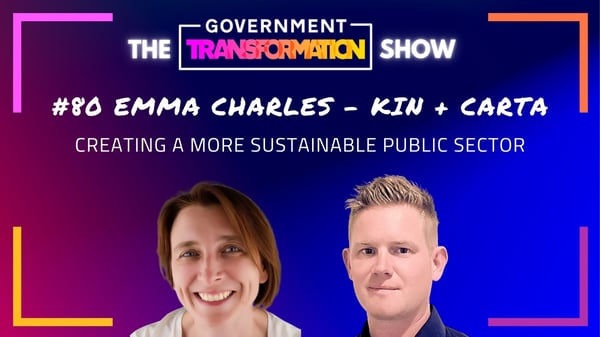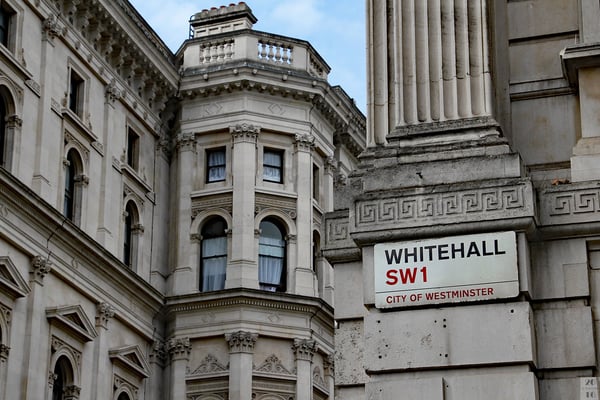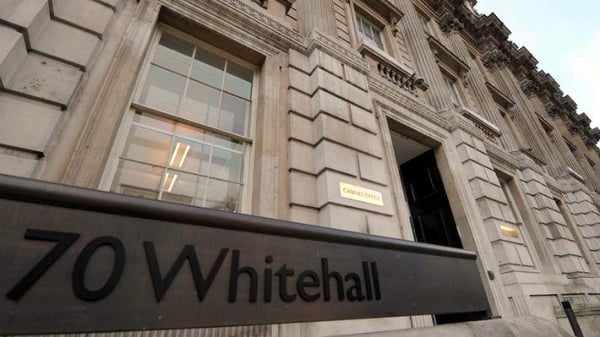How the public sector can make more sustainable choices
As a key government partner with experience across departments ranging from the Department of Work Pensions (DWP) to the Home Office, we witness first-hand the multiple challenges the public sector faces in its collective efforts to change for the better.
Barriers span a shortage of civil servants with the right skill-set to successfully design and build services fit a modern society, to problems within procurement systems that often lead to delayed delivery or wasted budget.
But one of the most pressing issues, which the majority of organisations are yet to get to even start coming to terms with, is sustainability. Here, the public sector is just scratching the surface - and both the public and the planet needs government to move faster.
I sympathise - until around three years ago, and certainly in previous roles, I knew very little about sustainability. But the more I’ve engaged with civil servants, the more I’ve recognised why this is such an urgent agenda, or deserves to be. There’s plenty of talk about the impact of climate change and measuring the carbon footprint of services, but a disappointing amount of activity that’s making a real difference.
However, all is not lost. The intention to change and have a more positive effect on the world around us - while also serving society well - is evident. Happily, so too are lots of ways in which organisations and individual employees can begin to make a difference.
Consider ways to make incremental gains
Kin+ Carta - a certified B Corp and supporter of the Civil Service Environment Network - is helping teams to ‘do their bit’. I’ll give you an example. The Met Office has created an ‘activity checklist’ that employees can opt into - it’s not compulsory, yet - to check the impact levels of their work. It’s a tangible way to get people to think about how they can make a difference.
What we now need to do together is take more of a strategic rather than tactical approach - whether your organisation has a strong sustainability team already, or is setting out to establish one as part of a roadmap for transformation.
Key ways to achieve this:
- Information sharing is definitely happening at a greater scale, with the likes of CTOs and CDOs from different departments imparting knowledge across divides. It would be good to devise and implement a standard way to share ideas and successes that all organisations can tap into and try to replicate.
- Helping suppliers write net-zero policies should become standard. A lot of supplier procurement seems to be led by trust, not commercial reality. Service providers must be pushed harder to prove how they’d meet sustainability goals; but also encouraged with advice and support on how to get there. It’s also important to remember that the cheapest products and services are not always the cleanest.
- In terms of technology, migrating to the Cloud and setting up environments to be truly sustainable is paramount. Ask, what is the host business really doing to maximise energy efficiency? Other gains can be made in simple ways. When procuring new laptops for every employee, for instance, consider whether total carbon footprint could be reduced by switching to a different model.
- Understanding users fully through insight is another approach that’s proving fruitful. If individuals and groups aren’t asked what they want and need in order to provide them with the knowledge and autonomy to make more sustainable decisions, how will we ever reach net zero? I feel organisational leadership is key here, too, to understand how education and incentives can play a part.
- Measurement is also vital. Innovation and creative thinking are good, but they need to be framed with targets in mind to bring down impact levels over time. In a similar vein, it would be good to see sustainability included within the government Service Standard alongside aspects such as accessibility. At Kin+Carta, we use tools and methodologies to actively measure the carbon footprint of projects and keep emissions down; and evaluation matrixes are applied to solution choices, to ensure ‘carbon value’ is considered and reflected in project direction.
Viewing these points together, it strikes me that a greater focus on environmental factors across technology, procurement and service design could make an impact through incremental gains. Sometimes change might only mean making tweaks to existing systems.
Overall, transformation can be harnessed to empower civil servants to prioritise sustainability in their decision-making. It’s now time to move from goodwill to practical action.






